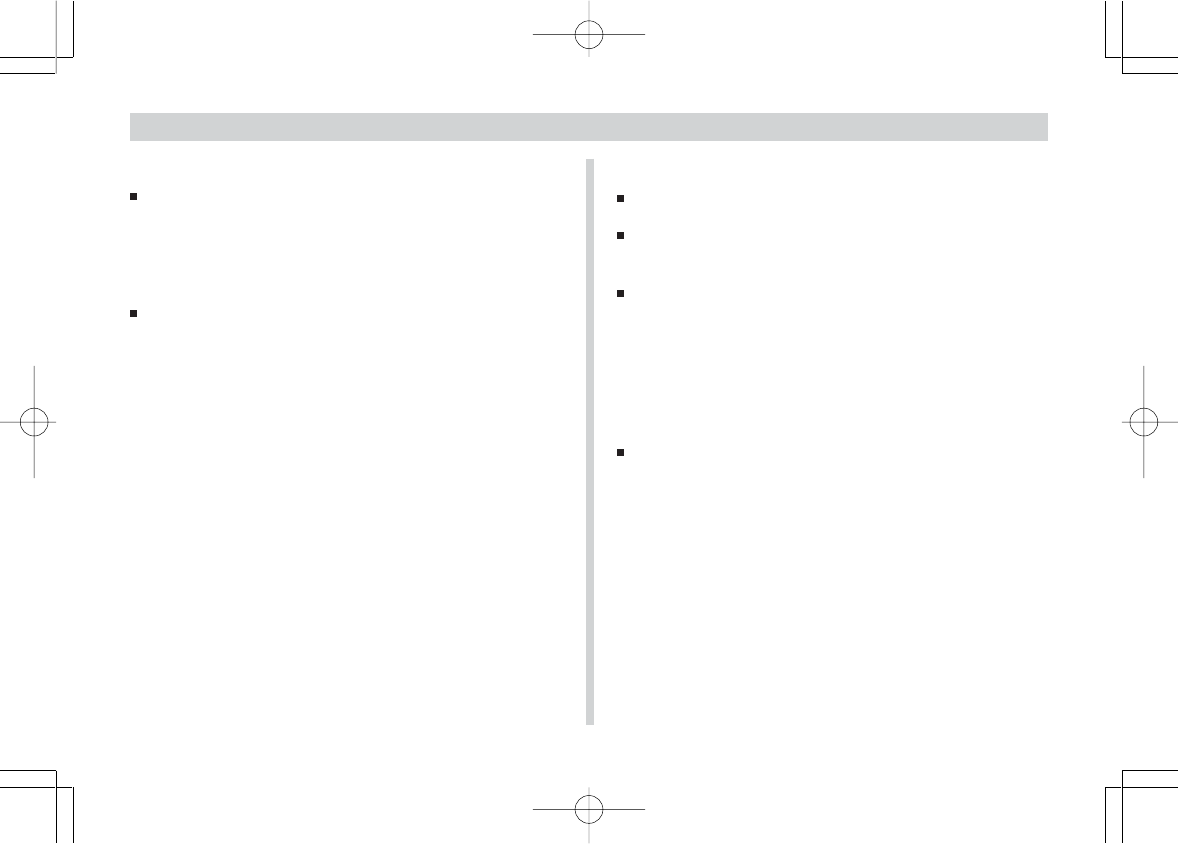
9
INTRODUCTION
Condensation
When you bring the camera indoors on a cold day or other-
wise expose it to a sudden change of temperature, there is
the possibility that condensation can form on the exterior or
on interior components. Condensation can cause malfunc-
tion of the camera, so you should avoid exposing it to con-
ditions that might cause condensation.
To keep condensation from forming, place the camera into
a plastic bag before moving it into a location that is much
warmer or colder than your current location. Leave it in the
plastic bag until the air inside the bag has a chance to
reach the same temperature as the new location. If con-
densation does form, remove the batteries from the cam-
era and leave the battery cover open for a few hours.
About the camera’s backlight....
The camera is equipped with a fluorescent light source to
provide the back lighting for its LCD.
The normal service life of the backlight is approximately
five years, when the camera is used for about two hours a
day.
Under very cold conditions, the backlight may require
more time than normal to light, or reddish bands may ap-
pear in the displayed image. These conditions do not indi-
cate malfunction, and normal operation should return at
higher temperatures.
Lens Precautions
Fingerprints, dust, or any other soiling of the lens can inter-
fere with proper image recording. Never touch the lens with
your fingers. You can remove dust particles from the lens
surface by using a lens blower to blow them off. Next, wipe
the surface of the lens with a soft lens cloth.
¥¼©R¦W-1 2002/6/18, AM 10:40Page 9 Adobe PageMaker 6.5C/Win


















